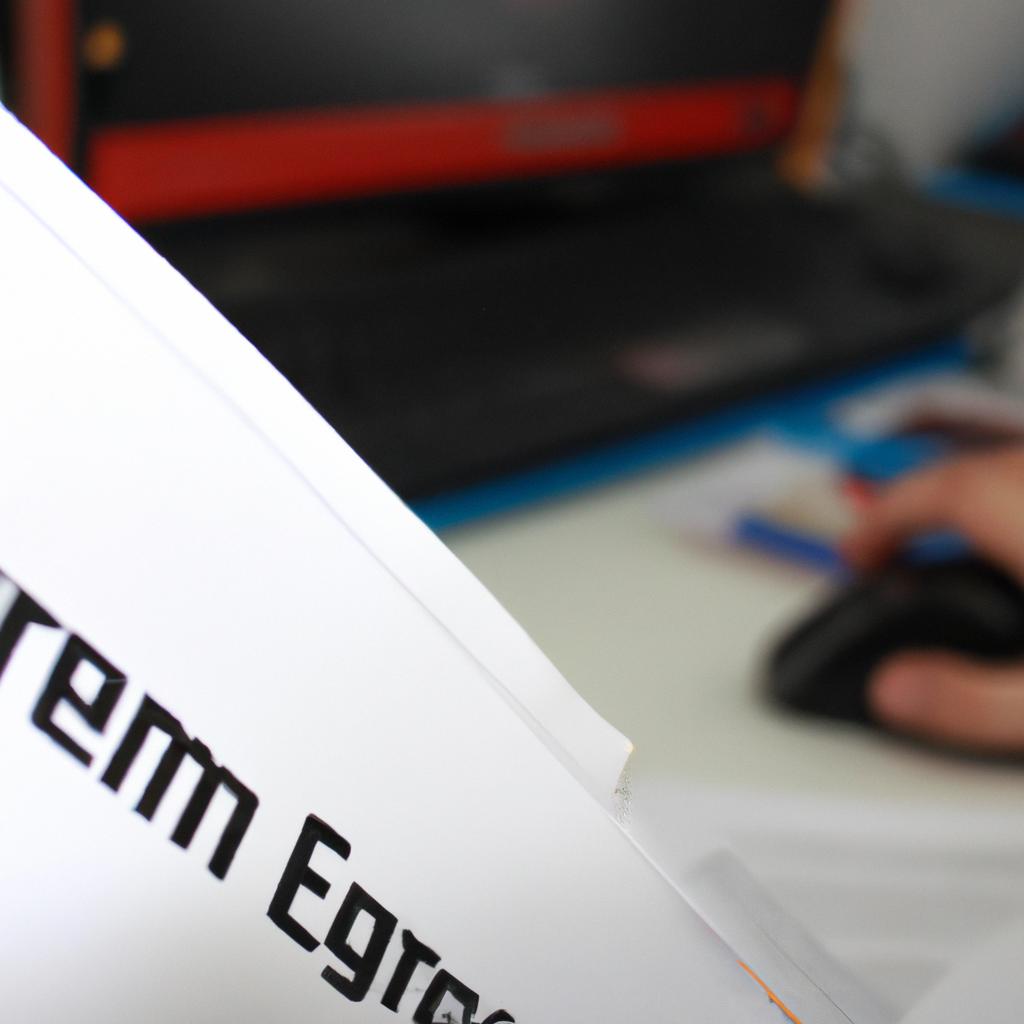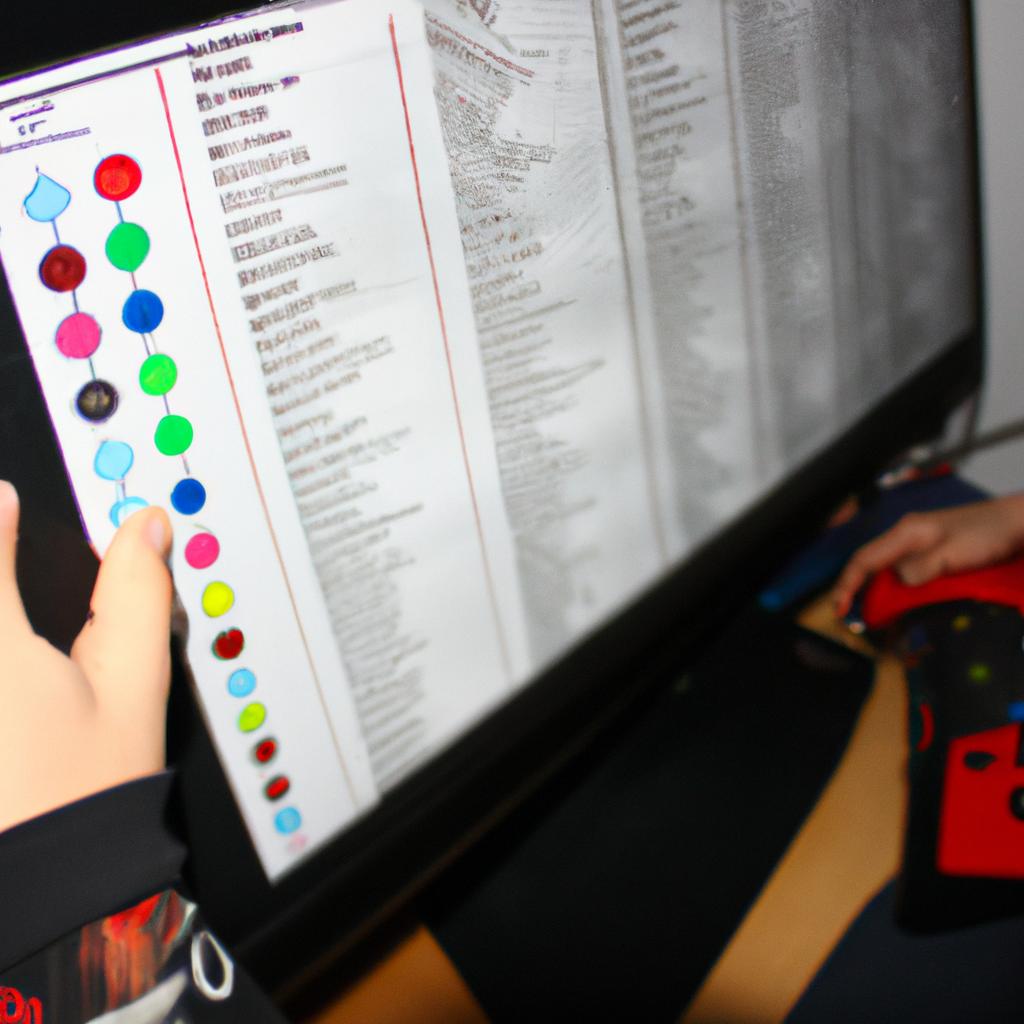Development Methodologies: Games and Video Games

The development of games and video games is a complex process that requires careful planning, organization, and implementation. The use of effective development methodologies plays a pivotal role in ensuring the success of these projects. In this article, we will explore various development methodologies commonly employed in the gaming industry, examining their benefits and limitations.
Consider the hypothetical scenario of a game development company tasked with creating an open-world adventure game set in a post-apocalyptic world. To bring this ambitious vision to life, the company must decide on an appropriate development methodology that aligns with their goals and resources. This decision can significantly impact the project’s progress, efficiency, and overall quality.
In order to shed light on this topic, we will discuss prominent methodologies such as Waterfall, Agile, Scrum, and Kanban. Each methodology offers unique advantages when it comes to managing different aspects of game development, including design iteration cycles, resource allocation, team collaboration, and risk management. By understanding these methodologies and their applications within the gaming industry context, developers can make informed decisions about which approach best suits their specific project requirements.
Waterfall Methodology
When it comes to the development of games and video games, various methodologies are employed to ensure efficient and successful project completion. One such methodology is the Waterfall Methodology, which follows a linear sequential approach where each phase must be completed before moving on to the next. To better understand this methodology, let us consider an example scenario: Imagine a game development studio working on a new action-adventure video game.
Phases of Waterfall Methodology:
The Waterfall Methodology consists of several distinct phases that guide the development process from start to finish. These phases include:
- Requirements Gathering: In this initial stage, developers gather all necessary information about the game’s features, mechanics, target audience, and platform compatibility.
- Design: Once requirements have been gathered, designers create detailed design documents outlining elements such as gameplay mechanics, characters, levels, and visual aesthetics.
- Implementation: With the design in place, programmers begin coding the game based on the specifications outlined in the previous phase.
- Testing and Deployment: This final phase involves rigorous testing of the developed game for any bugs or glitches before deployment to market.
Key Characteristics:
To provide a clearer understanding of how the Waterfall Methodology functions compared to other methodologies commonly used in software development processes today (such as Agile), we can examine its key characteristics using a table:
| Characteristic | Description |
|---|---|
| Sequential | Each phase flows logically into the next without overlap |
| Rigid | Changes made during later stages may be difficult |
| Documentation | Emphasizes thorough documentation at every step |
| Predictability | Provides clear timelines and deliverables |
Transitioning into Agile Methodology:
As with any methodological approach in game development or software engineering, there are pros and cons associated with employing the Waterfall Methodology. However, due to its linear nature, it may not be suitable for projects where requirements are likely to change or evolve throughout the development process. In such cases, an alternative methodology like Agile is often preferred. The subsequent section will delve into the Agile Methodology and explore its benefits in contrast to the Waterfall Methodology’s more structured approach.
Agile Methodology
Transitioning from the Waterfall methodology, another popular approach in game and video game development is the Agile methodology. Unlike the sequential nature of Waterfall, Agile focuses on iterative and flexible processes that allow for continuous improvement throughout the development cycle. One example of Agile in action is the creation of a mobile puzzle game called “Mind Maze.”
In adopting Agile, the team behind Mind Maze was able to respond quickly to user feedback and adapt their design accordingly. The initial release featured basic gameplay mechanics with limited levels, enabling early users to provide valuable insights. With each iteration, new features were introduced based on these suggestions, resulting in an enhanced gaming experience.
Agile methodologies bring several benefits to game and video game development:
- Flexibility: Agile allows developers to be more adaptable by accommodating changes during various stages of development.
- Collaboration: Frequent communication among team members promotes collaboration and ensures everyone has a clear understanding of project goals.
- Continuous Improvement: Iterative cycles enable testing and refinement throughout development, leading to higher quality end products.
- User-Centric Approach: By involving users early on through playtesting or beta versions, Agile methodologies prioritize meeting customer needs.
The following table showcases a comparison between the Waterfall and Agile methodologies:
| Waterfall Methodology | Agile Methodology | |
|---|---|---|
| Development Process | Linear | Iterative |
| Project Scope | Defined at the beginning | Evolves over time |
| Communication | Minimal interaction with stakeholders | Regular engagement with stakeholders |
| Risk Management | Addressed at later stages | Continuously monitored |
Transitioning into our next section on Scrum Methodology…
Scrum Methodology
Building upon the Agile methodology, another widely used development framework in the gaming industry is the Scrum methodology. This approach emphasizes flexibility and collaboration among team members to deliver high-quality games and video games efficiently.
Scrum Methodology:
To illustrate the effectiveness of the Scrum methodology, let’s consider a hypothetical case study involving a game development company called “GameRevolution.” The team at GameRevolution decided to adopt Scrum for their latest project, an immersive open-world RPG. By dividing their work into small manageable tasks or user stories, they were able to prioritize and tackle them one by one.
The Scrum methodology operates on several key principles that contribute to its success within the gaming industry:
- Iterative Development: In Scrum, developers continuously iterate through short development cycles known as sprints. Each sprint typically lasts about two weeks and focuses on completing specific features or functionalities. This iterative process allows for regular feedback from stakeholders and facilitates quick adjustments based on changing requirements.
- Cross-functional Teams: Scrum promotes cross-functional teams consisting of individuals with diverse skill sets such as programmers, artists, designers, and testers. These teams collaborate closely throughout the entire development process, ensuring effective communication and fostering creativity.
- Transparency: Transparency plays a crucial role in Scrum. It involves frequent progress updates through meetings like daily stand-ups where team members discuss what they accomplished yesterday, what they plan to accomplish today, and any obstacles they are facing. This transparency ensures everyone is aware of project status and encourages accountability.
- Empirical Process Control: Scrum relies heavily on empirical process control rather than predictive planning. Instead of detailed upfront planning, it embraces adaptive planning that adapts to changes during development. Regular retrospective meetings provide opportunities for reflection and improvements.
Here is an example table showcasing how different elements align within the Scrum methodology:
| Elements | Description |
|---|---|
| Product Backlog | A list of all desired features, prioritized by the product owner. |
| Sprint Planning | A meeting where the team selects user stories to work on during a sprint. |
| Daily Stand-ups | Brief daily meetings for team members to discuss progress and challenges. |
| Sprint Review | A demonstration of completed work at the end of each sprint, getting feedback from stakeholders. |
Incorporating these principles and practices enables game development teams using Scrum to deliver high-quality games efficiently while maintaining flexibility throughout the process.
As we have explored both Agile and Scrum methodologies in detail, it is important to also consider another popular approach known as Lean methodology. This lean approach focuses on minimizing waste and maximizing value delivery, making it an ideal choice for optimizing game development processes.
Lean Methodology
Transitioning from the previous section discussing the Scrum methodology, we now turn our attention to the Lean methodology. To grasp its significance in the realm of game development, let us consider a hypothetical example. Imagine a game studio facing budget constraints and tight deadlines for their upcoming project. By adopting the Lean methodology, they prioritize efficiency and waste reduction throughout every phase of development.
The Lean methodology emphasizes continuous improvement and customer value creation. It aims to eliminate any activities or processes that do not directly contribute to delivering value to the end-users. With this approach, developers focus on minimizing unnecessary features or functionalities while maximizing player engagement and satisfaction.
To better understand how the Lean methodology is applied in game development, consider these key principles:
-
Value Stream Mapping:
- Identify all steps involved in developing a game.
- Analyze each step’s contribution towards creating customer value.
- Eliminate non-value-adding activities or optimize them for efficiency.
-
Minimum Viable Product (MVP):
- Develop an early version of the game with essential features only.
- Gather feedback from players to refine subsequent iterations.
- Continuously iterate and improve based on user input.
-
Continuous Improvement:
- Regularly assess the production process for potential improvements.
- Encourage team collaboration to identify areas for optimization.
- Implement changes incrementally to avoid disruption.
-
Waste Reduction:
- Minimize resources wasted on unnecessary assets or features.
- Avoid overproduction by focusing on core gameplay elements first.
- Optimize resource allocation through iterative planning cycles.
By adopting these principles, game studios can streamline their development processes, maximize value delivery, and create games that resonate with their target audience. The Lean methodology provides a structured framework to efficiently allocate resources while ensuring a focus on player satisfaction.
Transitioning to the next section, we now delve into the Kanban methodology and explore its application in game development.
Kanban Methodology
Lean Methodology is one approach that has gained popularity in the development of games and video games. In this section, we will explore another widely used methodology called Kanban. Similar to Lean, Kanban focuses on continuous improvement and efficiency in the development process.
To illustrate the application of Kanban in game development, let’s consider a hypothetical scenario. Imagine a small indie game studio working on their latest project. They decide to implement Kanban as their chosen methodology to streamline their workflow and deliver high-quality games to their audience.
Kanban emphasizes visualizing work through the use of boards or cards, which represent tasks or features in the game development cycle. These cards move across different columns on the board, representing various stages of completion – from backlog to completed tasks. This visual representation provides transparency and allows team members to understand the overall progress at a glance.
Implementing Kanban brings several benefits for game development teams:
- Increased productivity: By limiting work-in-progress (WIP), Kanban helps focus efforts on completing tasks before starting new ones.
- Better collaboration: The visual nature of Kanban boards encourages open communication among team members and facilitates sharing updates and feedback.
- Flexibility: With its adaptive nature, Kanban enables teams to respond quickly to changing requirements or priorities during game development.
- Continuous improvement: Through regular meetings such as daily stand-ups or retrospectives, teams can identify bottlenecks and inefficiencies, leading to iterative improvements over time.
| Benefits of Implementing Kanban |
|---|
| Increased productivity |
| Better collaboration |
| Flexibility |
| Continuous improvement |
In summary, Kanban offers an effective framework for managing game development projects by promoting visibility, teamwork, flexibility, and continuous improvement. Its emphasis on visualization and limiting WIP helps teams stay focused while adapting to changes efficiently.
Iterative Methodology
Development Methodologies: Games and Video Games
In the previous section, we explored the Kanban methodology for game development. Now, let’s delve into another popular approach called the Iterative methodology. This method focuses on breaking down the development process into smaller iterations or cycles, allowing for continuous improvement based on feedback and iteration.
One example of the Iterative methodology in action is the development of a hypothetical mobile puzzle game. The team starts with an initial concept and creates a basic prototype to gather user feedback. Based on this input, they identify areas for improvement such as level design and gameplay mechanics. They then iterate on these aspects by implementing changes and creating an updated version of the game. This iterative cycle continues until a final product that meets quality standards is achieved.
The key characteristics of the Iterative methodology include:
- Feedback-driven progress: Regularly obtaining feedback from users or stakeholders helps drive improvements throughout each iteration.
- Flexible planning: Rather than mapping out every detail at the start, plans are adjusted and refined during each cycle based on new insights.
- Incremental delivery: Instead of waiting until completion to release a product, incremental deliveries allow for early launches and continuous updates.
- Risk mitigation: By identifying risks early on through frequent testing and evaluation, issues can be addressed promptly before they become major obstacles.
To illustrate further how this methodology works compared to others, consider the following table showcasing different approaches used in game development:
| Methodology | Focus | Strengths |
|---|---|---|
| Waterfall | Sequential | Clear project timeline |
| Agile | Collaboration | Adaptability to changing requirements |
| Spiral | Risk management | Emphasis on risk identification |
| Iterative | Continuous improvement | Flexibility based on user feedback |
This comparison highlights how the Iterative methodology stands out in terms of its focus on continuous improvement driven by user feedback. By incorporating feedback loops and iteration cycles, game developers can refine their products over time, resulting in better gameplay experiences.
In summary, the Iterative methodology offers a dynamic approach to game development by embracing continuous improvement. Through regular feedback gathering and iterating on different aspects of the project, developers can create high-quality games that evolve based on user needs and preferences. This iterative process allows for greater flexibility, risk mitigation, and ultimately delivers an engaging final product.









